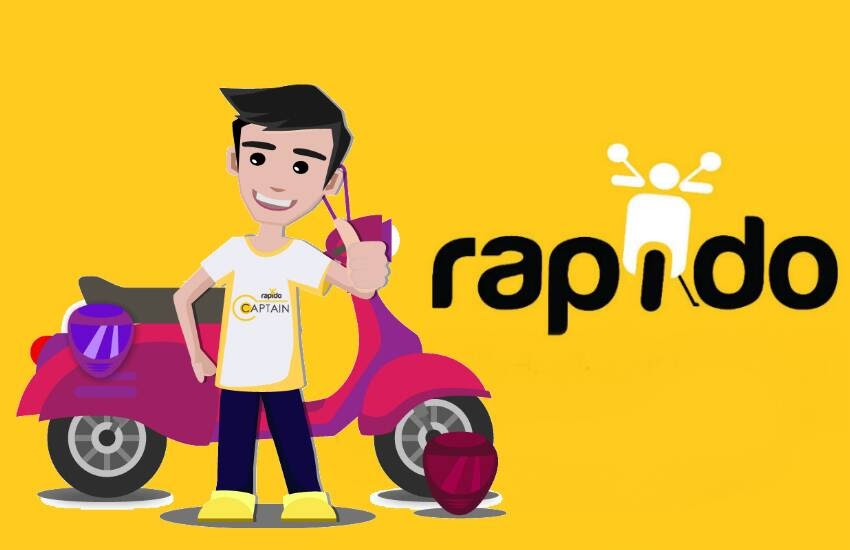Introduction
Rapido is a bike taxi aggregator online, which provides mobility solutions for its users. The business Model of Rapido involves its business Plan, Revenue model, its competitors, SWOT Analysis and many more.

B2C meant that the company can no longer deal with trucks but has to shift to bikes to ease the transportation requirements of the customers because going for cars would again mean an added financial burden for the company, tons of competitions, facing traffic, and delays. Therefore, with the simple idea to ease the journey of the customers, they started working initially with 15-20 people, who sowed the seeds for Rapido and made the success of the business possible with hard work, persistence, and dedication.
Business Plan
The primary goal of the company is to keep its app updated along with adding newer and more interesting features that would make it more convenient for both the captains and the users. The founders are also thinking about reducing the rates.
The plan of action of Rapido Bike Taxi predominantly intends to give the best and the most fulfilling administrations to its clients. They do it by offering sensible and safe rides to their clients.
On the commuter side, Rapido works like some other taxi-booking application. To book a ride, clients should join and enter the pickup and destination points. When the booking is affirmed, the name, photograph, and bike number of the Captain are imparted to them.
Revenue Model
- The commuter ride can be 40–60% cheaper than a cab ride depending on the time of the day. It also provides a feature of speed-tracking for the ‘captains’ that enables them to keep a tab on the speed of the bike. Rapido makes money by acting as a bridge between the ‘captains’ and the ride seeker and charges 20% of the total fare as its commission.
- Rapido earns money via B2C logistics by assisting logistics companies in delivering their products to the last-mile.
- Brand advertisement is a must in all cases. It’s a vital thing that not only helps the brands magnify their reputation but it also helps them to grow.
Competitors
This Business model is on the rise as the industry is diversifying at a greater speed than anticipated. Here is the list of some of Rapido’s Competitors:
SWOT Analysis
Strengths
- Low-fares: Drivers from all the regions collaborate to meet the demand from the consumers and therefore, there is always Cash Surplus. This helps to manage the supply efficiently and at the same time adds to the bottom line.
- Easily accessible: As it is mainly based on technology, it is easily accessible to anyone having a smartphone with internet access.
- Potential oriented with low tiered cities: It is basically based out of the last mile access, as the first movers advantage was taken out on the big tiered cities.
- Ideal for Short term distance: As it is highly low priced, it is easy for the users to grab the lowest prices, making it easy to get a hold on a lot of customers.
- Cashless travel: The app makes the payment method easy for all, helping everyone be it cashless, or based out of cash.
Weakness
- Safety Issues: Drivers play an important role in making the brand name of Rapido and hence any misbehaviour of the driver with the customers directly reduces the brand image in the market.
- Constant competition: Lately, there has been an increase in competition inside the market due to the presence of Uber and other local taxi service providers.
- Dependence on connectivity: Customers are only able to book rides if they are connected to the internet. As in India, connectivity is an issue and hence customers are not able to book rides. Though they have started with offline booking it is not yet very helpful and appropriate.
Opportunities
- Last mile connectivity: In Tier 2 and 3 cities, there has been a lack of proper government transport service and hence this can knock the door of opportunities for Rapido to look into those cities and capitalize on the opportunity.
- Increase in Services: Rapido shall attract non-tech-savvy customers, it has to rethink its business model where such segments can also make use of their services and it shall help Rapido in a big breakthrough as it helps to enhance the customer base to a great on a roader prospect with good margins of profit.
Threats
- Government Regulations: Government regulations about the taxi service industry have several uncertainties at the hand. Taxi service providers are changing being threatened by the changing norms and regulations.
- Outer Environment: Since, it is based on bike tours, so the possibility of pollution and dust is inevitable, as they are present everywhere and some people just don’t like the idea of it.
- Competition regarding Finances
- Frauds and Scandals: There have been incidents wherein the drivers have started to ask riders to book fake rides just to increase their ride counts for the day. This tends to result in a loss of revenue as the drivers are grossly paid for nothing.
Conclusion
Rapido wishes to make its app user-friendly to every section of the society; it is working on launching special and simplified features for visually challenged that would use voice-to-text commands. Rapido is striving to find its silver linings with innovative methods.




